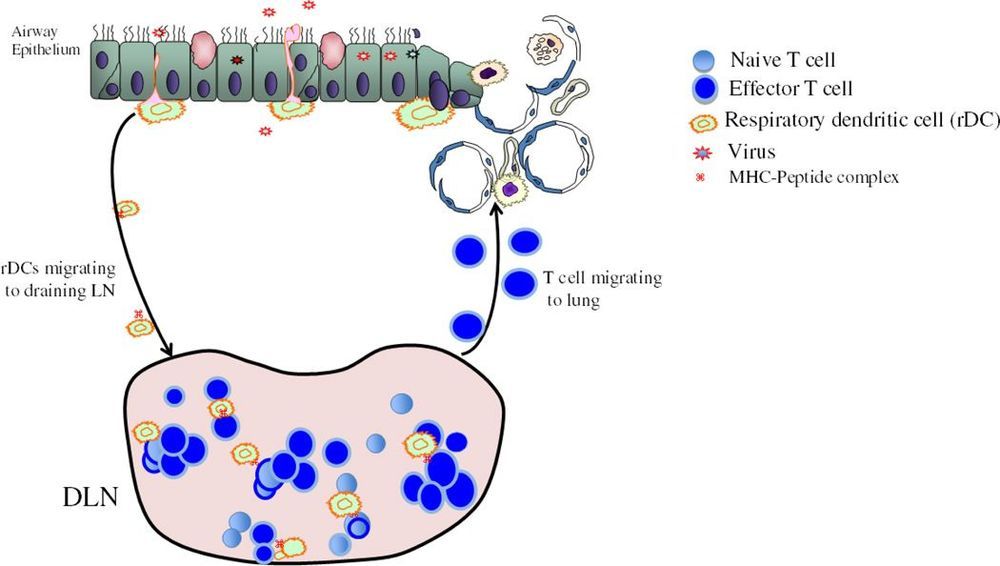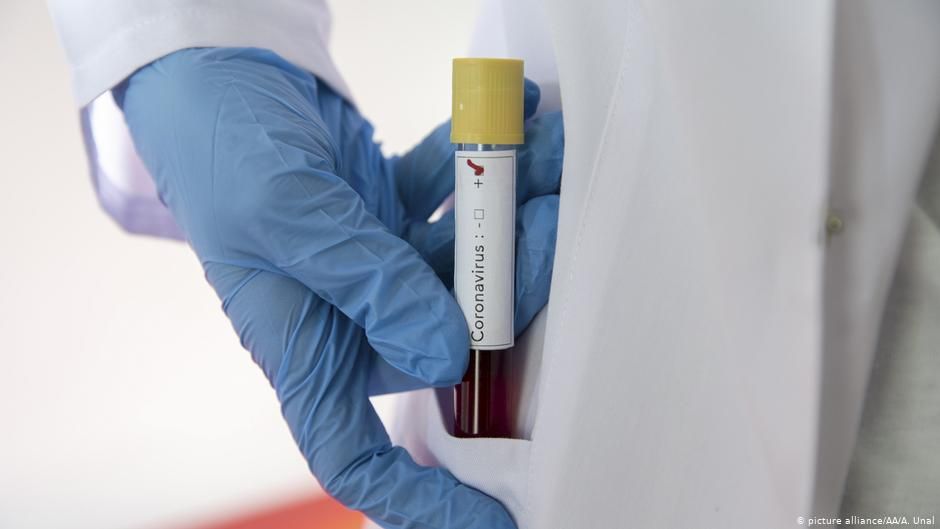Page 7350
Mar 20, 2020
Why Intel Is Investing In Neuromorphic Computing
Posted by Derick Lee in categories: computing, quantum physics
The neuromorphic approach is still in deep research, and is being investigated by Intel, IBM, HPE, MIT, Purdue, Stanford and others. It will likely be deployed in production solutions within the next three to five years. Like quantum computing, there is potential for a future solution than could be 1,000–10,000 times more efficient than the digital processing approach that is currently in vogue. But also like quantum, neuromorphic computing will require a lot of research to reach fruition. When it does, it will likely only be applied to a specific set of challenges. I will continue to watch with interest.
Analyst Karl Freund takes a look at Intel’s recent announcements in the realm of neuromorphic computing.
Mar 20, 2020
T-cell-mediated immune response to respiratory coronaviruses
Posted by Omuterema Akhahenda in categories: biotech/medical, cybercrime/malcode
Circa 2014 Emerging respiratory coronaviruses such as the Severe Acute Respiratory Syndrome coronavirus (SARS-CoV) and Middle East Respiratory Syndrome coronavirus (MERS-CoV) pose potential biological threats to humans. SARS and MERS are manifested as severe atypical pneumonia associated with high morbidity and mortality in humans. The majority of studies carried out in SARS-CoV-infected humans and animals attribute a dysregulated/exuberant innate response as a leading contributor to SARS-CoV-mediated pathology. A decade after the 2002–2003 SARS epidemic, we do not have any approved preventive or therapeutic agents available in case of re-emergence of SARS-CoV or other related viruses. A strong neutralizing antibody response generated against the spike (S) glycoprotein of SARS-CoV is completely protective in the susceptible host. However, neutralizing antibody titers and the memory B cell response are short-lived in SARS-recovered patients and the antibody will target primary homologous strain. Interestingly, the acute phase of SARS in humans is associated with a severe reduction in the number of T cells in the blood. Surprisingly, only a limited number of studies have explored the role of the T cell-mediated adaptive immune response in respiratory coronavirus pathogenesis. In this review, we discuss the role of anti-virus CD4 and CD8 T cells during respiratory coronavirus infections with a special emphasis on emerging coronaviruses.
Coronaviruses belong to the family coronaviridae and are enveloped, positive-sense, single stranded RNA viruses. The coronavirus genome is approximately 31 kb, making these viruses the largest known RNA viruses yet identified. Coronaviruses infect a variety of hosts including humans and several other vertebrates. Coronaviruses are associated with several respiratory and intestinal tract infections. Respiratory coronaviruses have long been recognized as significant pathogens in domestic and companion animals and as the cause of upper respiratory tract infections in humans. Thus, several human coronaviruses (HCoVs) are the etiological agents for mild respiratory illness, including the common cold and croup (e.g.: HCoV-229E, HCoV-OC43, HCoV-NL63 and HCoV-HKU) (3, 4). Human coronaviruses such as SARS-CoV and MERS-CoV are also associated with severe respiratory illness (5–9).
Mar 20, 2020
Drugs from antibodies of Covid-19 survivors
Posted by Omuterema Akhahenda in category: biotech/medical
About 80,000 people worldwide have survived a Covid-19 infection. Their immune systems will have produced antibodies, which will help their bodies recognize and fight a repeat attack by the coronavirus. It’s a natural defense mechanism.
Aside from a Covid-19 vaccine, antibodies from recovered patients could provide a short-term “passive immunization” to the disease. A German immunologist saved thousands of lives with the method 100 years ago.
Mar 20, 2020
There’s A Shortage Of Ventilators For Coronavirus Patients, So This International Group Invented An Open Source Alternative That’s Being Tested Next Week
Posted by Omuterema Akhahenda in categories: 3D printing, biotech/medical
Topline: A group of 300-plus engineers, designers, tech founders and others galvanized on Facebook with a goal of building a ventilator using readily available materials, 3D printing and open-source hardware resources. In just seven days, they built a prototype that will be validated as a solution to the global ventilator shortage by Irish authorities as early as next week.
Mar 20, 2020
The Doctor Who Helped Defeat Smallpox Explains What’s Coming
Posted by Omuterema Akhahenda in categories: biotech/medical, health, neuroscience
In addition to working with the World Health Organization to end smallpox, Larry Brilliant has fought flu, polio, and blindness. He says we will, eventually, get back to normal. But that’s not going to occur until three important things happen first. LARRY BRILLIANT SAYS he doesn’t have a crystal ball. But 14 years ago, Brilliant, the epidemiologist who helped eradicate smallpox, spoke to a TED audience and described what the next pandemic would look like. At the time, it sounded almost too horrible to take seriously. “A billion people would get sick,” he said. “As many as 165 million people would die. There would be a global recession and depression, and the cost to our economy of $1 to $3 trillion would be far worse for everyone than merely 100 million people dying, because so many more people would lose their jobs and their health care benefits, that the consequences are almost unthinkable.”
Epidemiologist Larry Brilliant, who warned of pandemic in 2006, says we can beat the novel coronavirus—but first, we need lots more testing.
Mar 19, 2020
La Maison De La Celle-Saint-Cloud’ Art Installation
Posted by Maico Rivero in categories: habitats, space
‘La Maison de La Celle-Saint-Cloud’ is an art installation from 1974, in a house built by French artist, Jean Pierre Raynaud. Fascinated by space, uniformity and identity, he began to build this house in 1969 using entirely white tiles with black grout, creating the regular grid pattern in a rigid and geometric form. In 1974, the house was opened to the public in Paris showing the ultimate perfection and flawlessness. But then in 1988, the artist decided to closed the house to himself only and subsequently demolished it in 1993 and presented the debris in 976 surgical containers.
The life of La Maison didn’t stop there, the fragments of which, have since been exhibited in various installations, and the fashion industry has also been paying tribute to it with different ad campaigns and collections inspired by the house.
Mar 19, 2020
Chloroquine May Fight Covid-19—and Silicon Valley’s Into It
Posted by John Davies in category: biotech/medical
The old malaria drug is getting used against the coronavirus. Tech enthusiasts are abuzz. One missing step: clinical trials.
Mar 19, 2020
Musk the Virus Skeptic Makes Reluctant Ventilator Offer After GM
Posted by Genevieve Klien in categories: biotech/medical, sustainability
Tesla Inc. joined General Motors Co. in offering to manufacture hospital ventilators in auto factories shuttered by the coronavirus outbreak, an effort that would echo Detroit’s contribution to Allied powers during World War II.
Mar 19, 2020
This AI system predicts air pollution before it happens
Posted by Genevieve Klien in categories: robotics/AI, sustainability
Computer scientists from Loughborough University in the UK have developed a new AI system that predicts air pollution levels days in advance.
The system developed analyzes air data through sensors installed in cities to predict the pollution levels.
It could be used to help us understand the environmental factors that affect one of the most dangerous pollutants in the world: PM2.5.


















